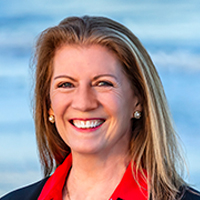
For years, I have been writing and speaking about topics I believe other financial advisors aren’t talking about or don’t necessarily have the tools and wisdom to deal with, including addiction and mental illness. My goal is always to fill that void in understanding how to work with our clients and to normalize the situations.
My experience has also taught me that most advisors are generally not prepared to work with clients in their final years. And I will admit, neither was I.
I learned a lot from Richard and Peg, whom I pursued for a couple of years to become my clients. I really liked them, and I knew I could provide them with the level of service and the trusted relationship that they said they were looking for. They, particularly Richard, were apprehensive to move from their newly hired advisor for several reasons.
First, they wanted to give the advisor a chance to put into practice everything he had claimed he would do for them as a holistic advisor. Second, their advisor was dealing with a terminally ill child, and they did not have the heart to pull business away from him during that most difficult time. Third, the advisor was their friend.
A big wake-up call
I kept in touch with Richard and Peg for the next few years. Their advisor’s child had sadly passed, and there was never any work or discussion of Richard and Peg’s financial well-being outside of their investment choices and performance.
Eventually, Richard called to tell me that he and Peg were considering switching advisors and asked if I would be willing to meet with them. What I wasn’t prepared to hear was that Richard had just learned that his colon cancer, thought to be in remission, had resurfaced in an extremely aggressive way. He was told he had less than a year to live.
The final stage of our clients’ lives has been neglected, but the work we do in the area is so essential. I would profess to say that out of any stage of our relationship, this is the one with the greatest magnitude because of the level of comfort we can provide.
Is dying a new phenomenon?
We all die — no surprise there. What has changed, however, is that being around people suffering for a prolonged period is a relatively new phenomenon. In the early 1900s, life expectancy hovered around 50 years old. Your average family had seven kids, and parents expected their kids would be there to help them when they could no longer help themselves. In most of human history, people really didn’t get old.
Today in the U.S., life expectancy at age 65 ranges from 15.8 to 19.2 years for males and 19.0 to 22.9 years for females, depending on the state.
Looking ahead, projected longevity for those born in the U.S. in 2060 is 83.9 years for men (a 6.6-year gain compared with those born in 2017) and 87.3 for women (up 5.3 years from 2017).
But longevity isn’t always a positive: Adults in their 50s and 60s are suffering from watching our parents deteriorate longer and in greater numbers than at any time in history. This new phenomenon is a relatively new problem. Right now, our clients and their families are struggling to understand and recognize certain needs and wants, and they’re desperately looking for help.
It’s not about dying, but about changing the focus
Living longer isn’t the goal for most people. The focus is shifting to the hope of living a more purposeful life (less stuff, tighter networks/communities). And those of us who want to help retirees live their best life can learn a lot from some experts in the field.
I hope most of you have heard of Dr. Roger Landry, president of Masterpiece Living and a consultant whose mission is to inspire and cultivate individual growth, resilience, and purposeful longevity. In his book “Live Long, Die Short,” Landry discusses individuals’ remaining priorities besides just surviving. This includes how to embrace aging and elevate expectations of being all that you can be.
Inspiring your client by providing resources and offering a more positive mindset is one thing, but approaching a conversation with your client who might be having difficulty aging is another. Dr. Susan Block at Dana-Farber Cancer Institute said that dialogues are not about sophisticated hard choices or last-minute epiphanies. Instead, they are about the process of understanding hopes and fears in everyday life.
You can’t fix it, you can’t fix it, you can’t fix it!
As financial advisors, we are hardwired to deal with what we know and what we know our clients have (or don’t have) so we can fix it. We are built to rescue. However, we can’t fix imminent death. And learning how to deal with the unknown is just as important as the known. So now what?
Advisors must move from a quick-fix mentality to a more modular approach. Focus on becoming a thinking partner instead of a fixer. Our purpose is to help clients be smarter about their own problem, whatever it is. Hold a safe place for them. Bear witness to their problem. Pay attention to their readiness to fix the problem. Learn to be uncomfortable, because you can’t fix everything. Don’t be afraid to ask them, “What is it like to be you right now?” It may sound strange, but it’s simply a different way of engaging.
As the psychiatrist Viktor Frankl said, “Everything can be taken from a man but one thing: The last of the human freedoms — to choose one’s attitude in any given set of circumstances.”
For example, throughout the pandemic we have all been exposed to prolonged uncertainty and have had to be open to not knowing where this period will take us. So, we’ve actively tried to make it a source of discovery that transcends anxiety.
Two choices
When we’re faced with change, we can go in one of two directions. The exciting response is anticipation and curiosity. The protective response is avoidance and anguish. Turning the unknown into something we look forward to exploring — whether it’s retiring, moving to assisted living, or trying a new medication or procedure that could help — is the antidote to the fear of death. When we stay in touch with that, we are living, not just surviving. And the same goes with how we help our clients approach their problems.
Helping our clients with these reckonings as they approach the end of life (or really, any phase of their life) requires us to invest in the core facets of relational health: empathy, dialogue, commitment, responsibility, and the sharing of power and resources.
Must-have conversations
Our human selves often know what we want to say. What we lack is the how and when. Here are some ways to get the conversations rolling with clients.
Priority questions
The priority questions you ask your clients in their final years can give you a sense of what they are fighting for. From there you can best match what you can do to help (for example, living at home or not). The traditional query “What are your goals?” is too overwhelming. That isn’t enough in this situation. Instead, ask and think about what you can do to help give them the best possible today.
Many clients worry more about the quality of life in their final years and less about running out of money. So, if they say they’re worried about running out of money, ask them to explain specifically how they think this would impact their final years. Maybe they’re worried they won’t be able to afford their medicine or their home — and you can put their fears at ease to show them they have enough money for this.
It’s also important to ask clients what they want, which may be different than what their children want for them. For example, safety, which may be what their children seek, is usually not the only goal for people in their final years because that by itself can sometimes create loneliness, depression and loss of independence.
Make it normal
You need to have these conversations on a regular basis about the quality of life that clients seek because their objectives are likely to change over time.
Richard and Peg knew they had enough money to live comfortably. They also knew that their children were heading in a positive trajectory in their own careers and financial pursuits. The couple’s No. 1 priority was health and life enjoyment.
I asked Richard for permission to discuss his prognosis before we started working together, and he keeps me up to date on his medical conditions. Although Peg did not want that to be a part of every conversation, it’s important for me to know because it may affect their need for cash withdrawals and their travel budgets. The couple recently traveled to Paris before Richard was scheduled to begin his next treatment.
If you’re still not comfortable initiating conversations with clients about their final years, bounce this topic off other advisors during your next study group meeting. How do your peers feel about it? What are their positions? What do they wish they had done differently or better? Advisors can also think about their own goals because this practice can help them develop skills.
What not to say
We have all been there. Something comes out of our mouths, and we wish we never opened it. You still want to fix it by offering a remedy or a temporary solution. Stop. Our clients or anyone in our lives are the experts of their own feelings and fears. For example, there is nothing you can share in any story or lie about how they look that will make them feel better.
Why is this so important?
Our clients are getting much older, entering a new phase of life, yet we still do things the same way. Talking too much is what we do best. At this point in time in your clients’ lives, you need to listen at least half the time.
Remember, too, that many older clients remain isolated as the pandemic lingers, and they don’t know if they’ll live to see the world return to normal. We can still grant them freedom in confinement by encouraging them to talk and imagine — without us swooping in to try to fix everything.
Putting these thoughts together made me think about the fact that one day we will all be faced with the end of our lives. And so, perhaps today we might promise ourselves — for the sake of spouses, partners, family and friends — to make an effort to understand what can truly happen to us, to acknowledge our fears, to plan what we want to do with whatever time we have, and to know what trade-offs we are willing to make.
Catherine M. Seeber, CFP, CeFT, is passionate about blending both financial and nonfinancial needs and desires of her clients to make the most of their resources, time, talent, and energy as they transition through life. Cathy is a vice president and financial advisor with CAPTRUST.







